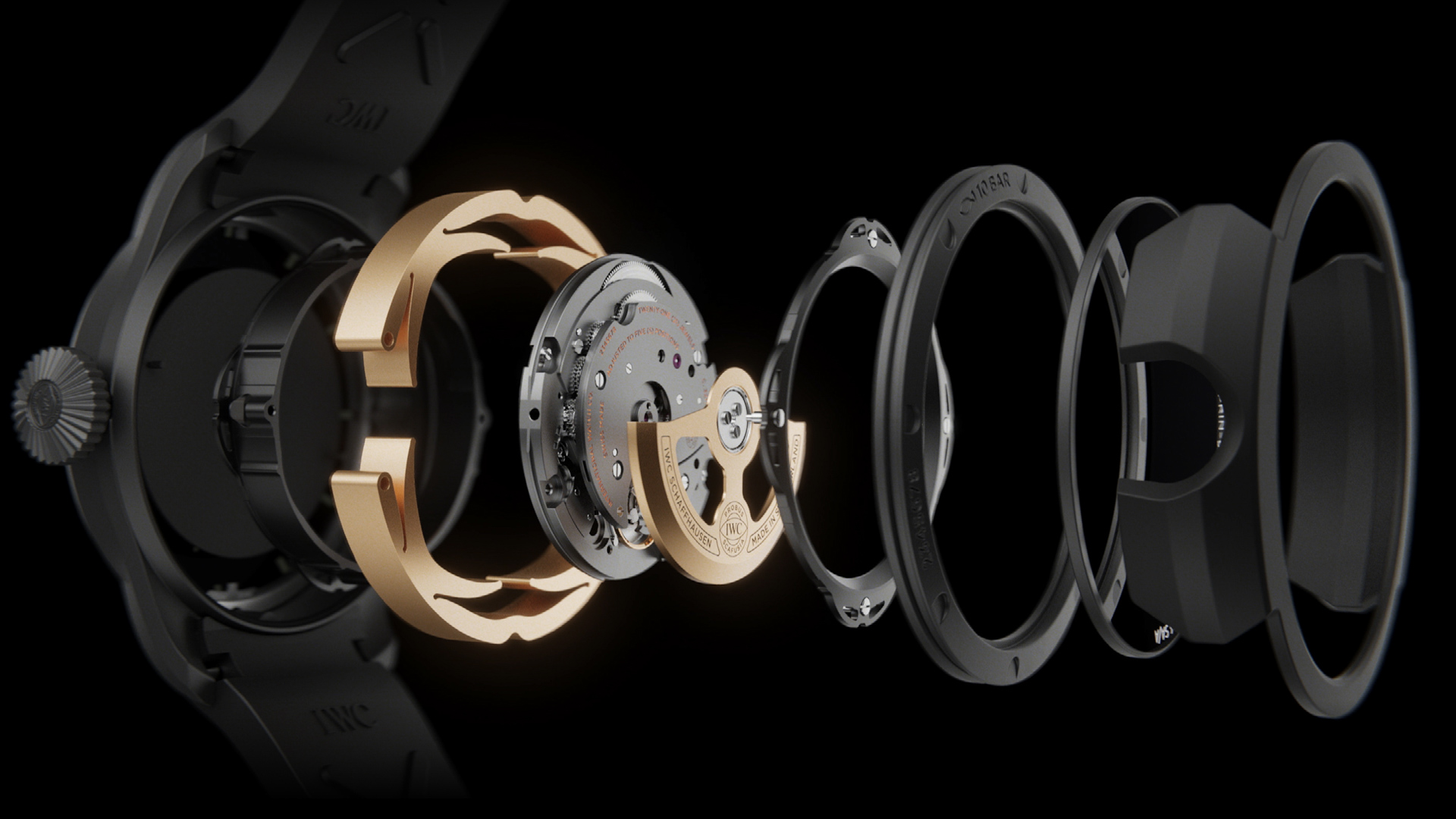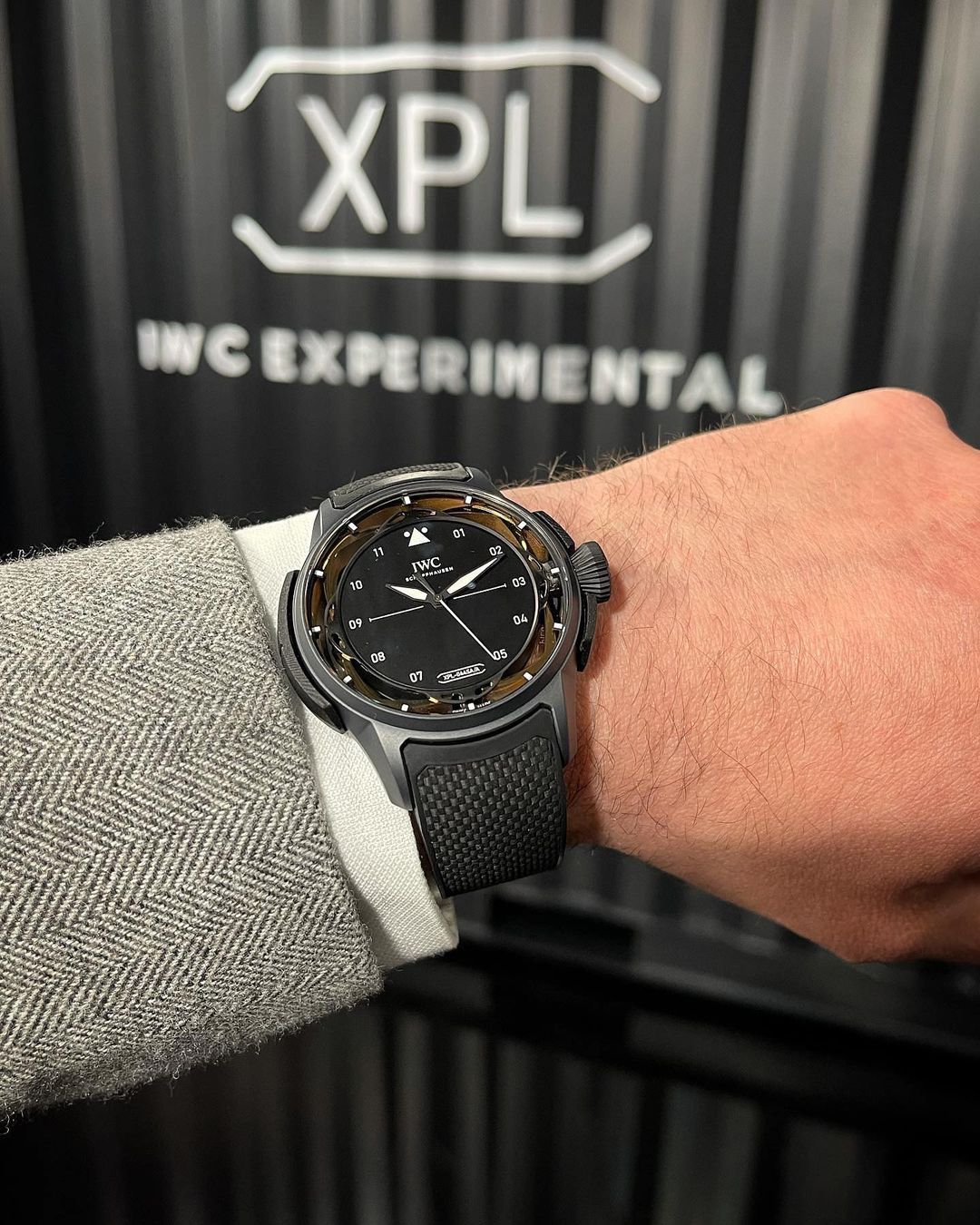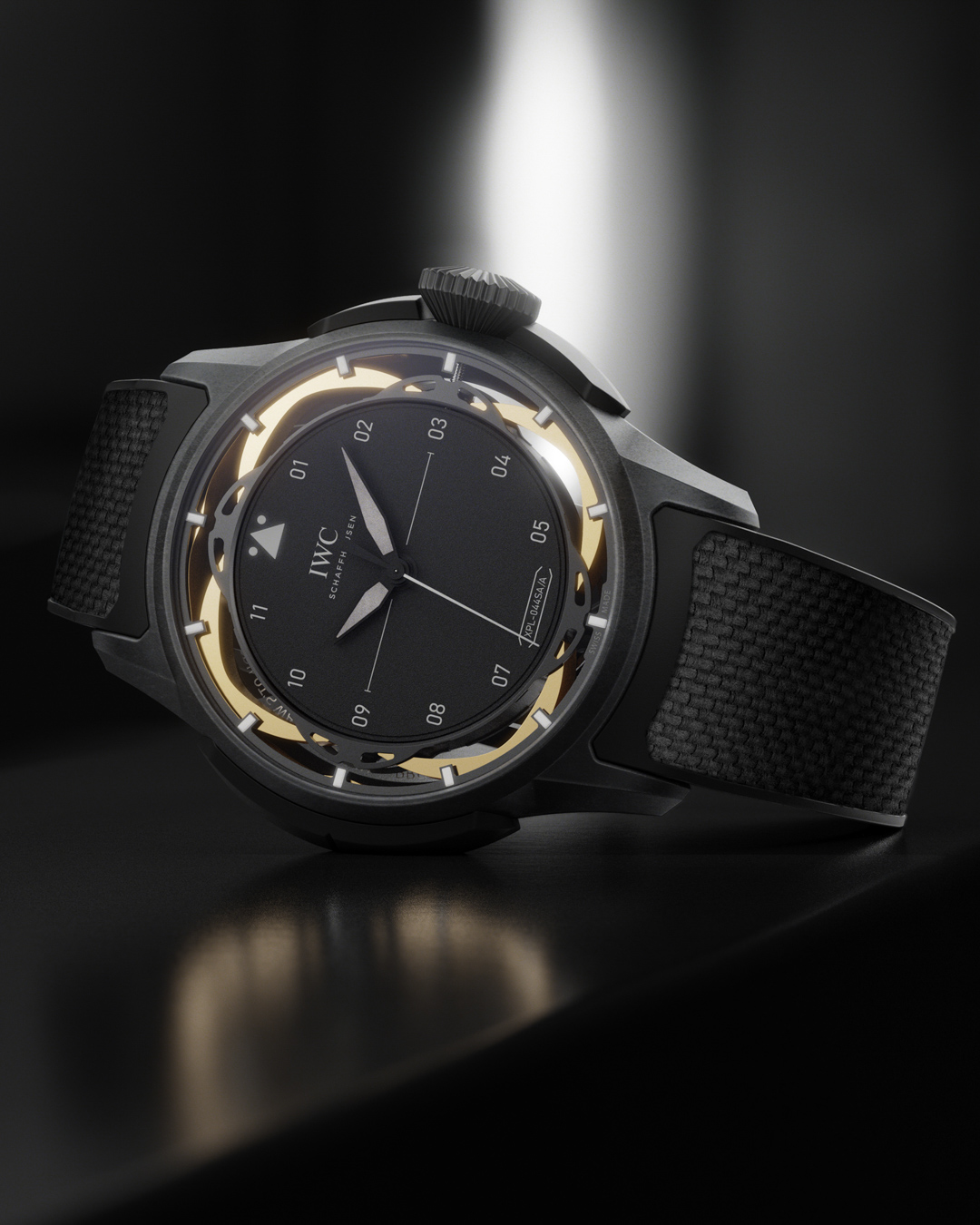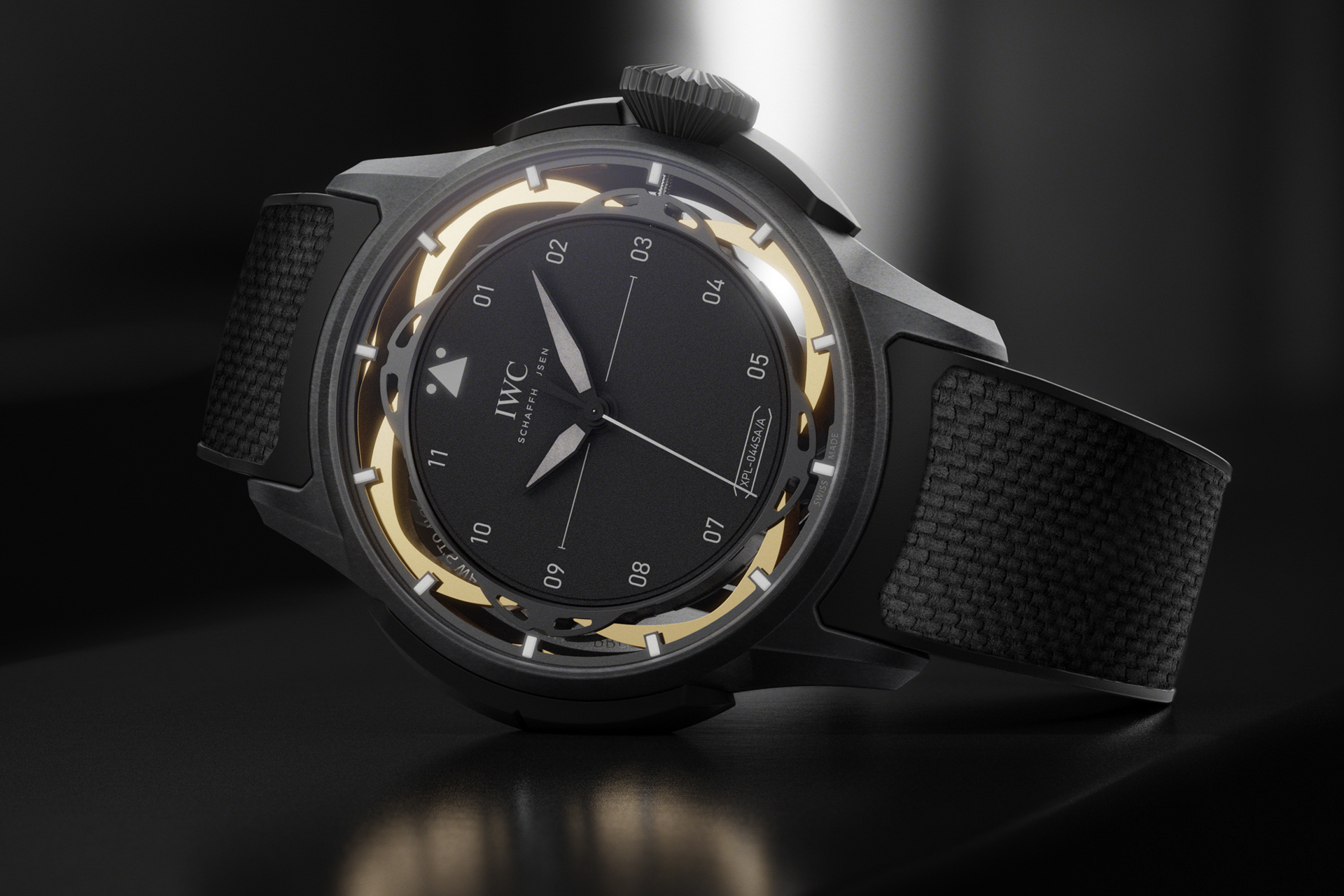 While the made-for-retail novelties tend to occupy most of the spotlight during the tradeshow cycles, my favorite announcements are routinely found among the concept pieces – stuff that’s not commercially viable or even remotely attainable for the vast majority of us. What makes these releases particularly fun or compelling isn’t the wild design (though this is all but a given, most of the time) or the gleefully stratospheric prices, but the promise of what’s to come for the future of the industry – innovations that usually become more widely available in the next three to five years as the technology becomes fully industrialized. Now, while I can’t say for sure that this staggeringly cool new IWC Big Pilots XPL concept, built around an anti-shock absorber dubbed “SPRIN-G PROTECT,” will become available to the rest of us anytime soon, its mere existence serves as a reminder that IWC is still daring, still pushing boundaries, and still capable of dreaming up watches for pilots whose own experimental aircraft may only yet exist on paper napkin sketches belonging to bored JPL engineers.
While the made-for-retail novelties tend to occupy most of the spotlight during the tradeshow cycles, my favorite announcements are routinely found among the concept pieces – stuff that’s not commercially viable or even remotely attainable for the vast majority of us. What makes these releases particularly fun or compelling isn’t the wild design (though this is all but a given, most of the time) or the gleefully stratospheric prices, but the promise of what’s to come for the future of the industry – innovations that usually become more widely available in the next three to five years as the technology becomes fully industrialized. Now, while I can’t say for sure that this staggeringly cool new IWC Big Pilots XPL concept, built around an anti-shock absorber dubbed “SPRIN-G PROTECT,” will become available to the rest of us anytime soon, its mere existence serves as a reminder that IWC is still daring, still pushing boundaries, and still capable of dreaming up watches for pilots whose own experimental aircraft may only yet exist on paper napkin sketches belonging to bored JPL engineers.
The Big Pilot’s XPL is the brainchild of IWC’s newly created Experimental (“XPL,” get it?) engineering division, which was tasked with developing an ultra shock-resistant design that could withstand impacts far beyond the traditional industry anti-shock countermeasures and testing thresholds. How far beyond? Well, the traditional tests are designed to simulate everyday impacts (bumping your wrist against a door frame, accidentally dropping your watch on the floor, etc.), starting at 25 Gs and measuring all the way up to 5,000 Gs using the famous “hammer test” in which a watch is smacked across the floor with a heavy plastic mallet. Most real-world impacts experienced by most watch-wearers tend to occur in the 300 – 1000 G range. But the movement in the Big Pilot XPL? In impact tests conducted at the Cavendish Laboratory at the University of Cambridge, it survived accelerations in excess of 30,000 Gs.
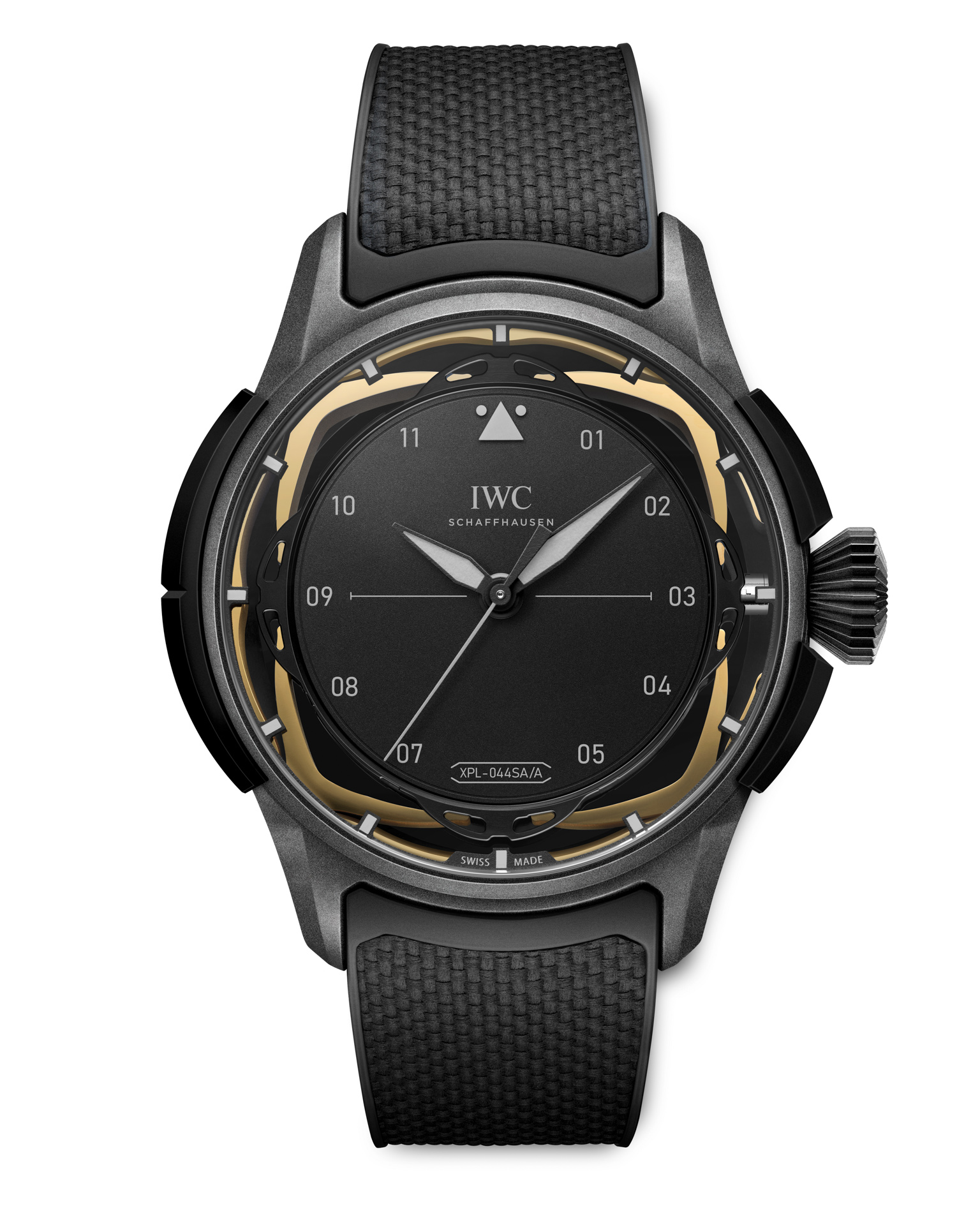
Specifications
Brand: IWC
Model: Big Pilot’s Watch Shock Absorber XPL (ref. IW357201)
Dimensions: 44mm
Water Resistance: 6 Bar
Case Material: Ceratanium (ceramic & titanium hybrid alloy)
Crystal/Lens: Sapphire
Movement: IWC in-house manufactured 32115 calibre (IWC Cal. 32110 base), suspended on BMG (Bulk Metallic Glass) cantilevered spring and modified for lightness
Functions: Hours, minutes, seconds
Frequency: 4Hz
Power Reserve: 120 hours
Strap/Bracelet: Black rubber strap with leather inlay
Price & Availability: $83,600, production limited to 10 pieces per year for three years (30 pieces total)
At its core, the new Big Pilot’s XPL is characterized by a new cantilevered spring movement suspension system called SPRIN-g PROTECT made from Bulk Metallic Glass (BMG), a gimbal of sorts that is designed to cradle the movement inside the case, thereby protecting it from extreme impacts. The movement itself is an IWC Cal. 32110 base, whose plates have been milled from aluminum to reduce the movement’s overall mass, enabling greater efficiency for the spring itself. Even the crown’s winding stem has been specially developed to allow the movement to displace independently between the spring and case walls. This sort of suspended countermeasure is one that we’ve seen employed in ultra-exotic watches from brands like Richard Mille – particularly the ultralight RM 27-04 built for tennis star Rafael Nadal, which houses its own cable suspension system for the movement, yielding extraordinary shock-resistance up to 12,000 Gs – the swing of a tennis racket, essentially. But that’s a hand-wound movement – which, even unadorned, tends to enjoy an ample degree of shock resistance. Again, this IWC was tested to 30,000 Gs. And it’s automatic.
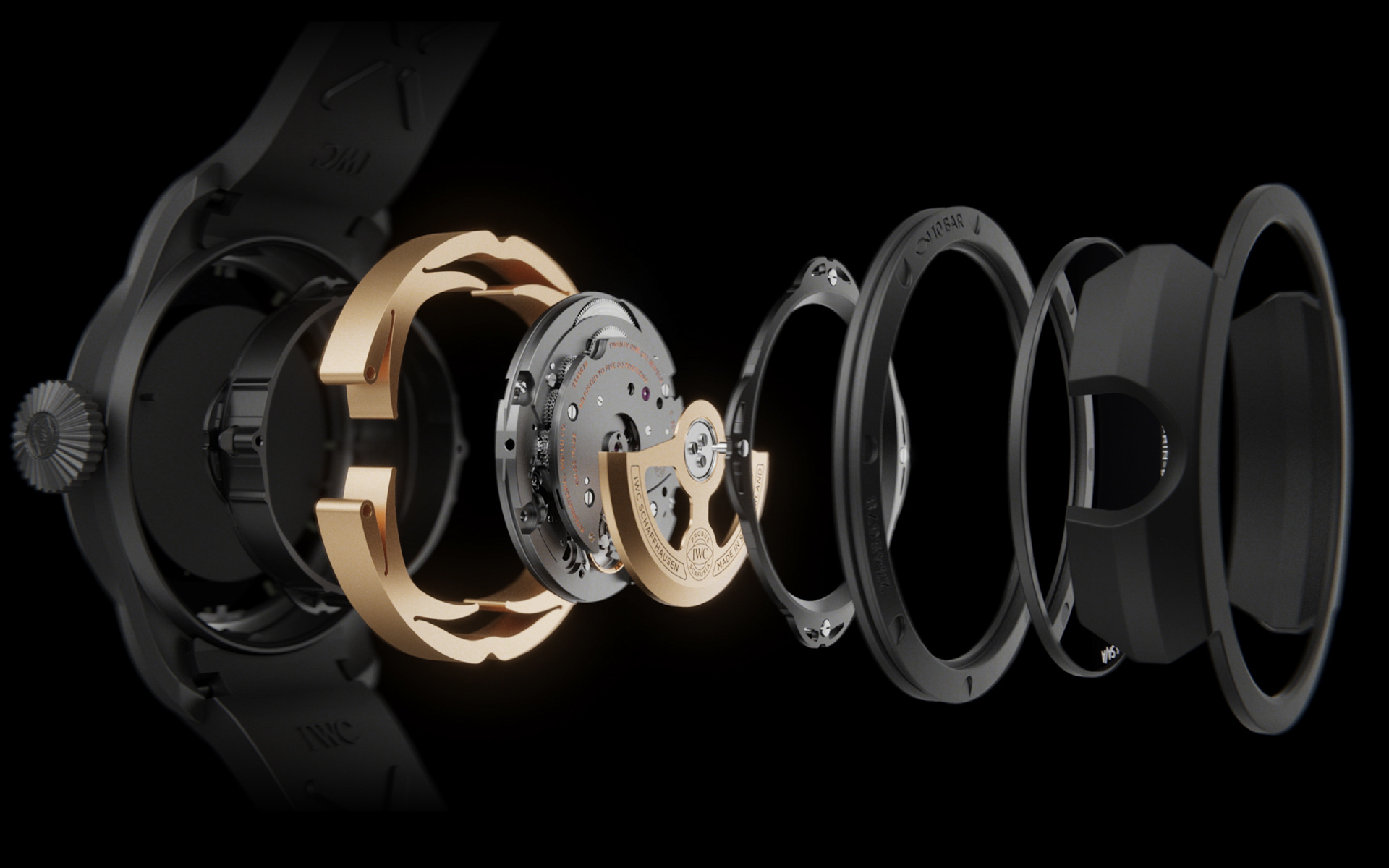 Of course, anti-shock tech is no stranger to the mechanical watch space – particularly in watches tailored for combat pilots who operate in cramped cockpits that offer plenty of hard surfaces upon which to bang one’s wrist during high-G maneuvers. Now, smacking a watch against the side of the cockpit during some complicated flight maneuver might subject the watch (for the sake of producing an easily divisible example, let’s call it a 100-gram object) to a force of around 300 to 1000 Gs – a force equal to only around three to ten times the relative weight of the watch, and well within the same relative G-forces that could be withstood by the human body. For real-world context, the G-force thresholds of reasonably fit, and trained individuals can reach as many as 14 Gs without experiencing a blackout. Again, this would be a force equal to 14 times the weight of the body, or 2,520 pounds for a pilot weighing 180 pounds. I flew in a Red Bull stunt plane once, and during one particular 6-G maneuver, I thought I could feel my soul leaving my body through the canopy. I lived to write about it for your entertainment. For what it’s worth, the standing Air Force record belongs to the legend John Stapp who survived 46 Gs riding a rapid deceleration sled for a voluntary experiment studying the effects of acceleration forces on humans. Respect.
Of course, anti-shock tech is no stranger to the mechanical watch space – particularly in watches tailored for combat pilots who operate in cramped cockpits that offer plenty of hard surfaces upon which to bang one’s wrist during high-G maneuvers. Now, smacking a watch against the side of the cockpit during some complicated flight maneuver might subject the watch (for the sake of producing an easily divisible example, let’s call it a 100-gram object) to a force of around 300 to 1000 Gs – a force equal to only around three to ten times the relative weight of the watch, and well within the same relative G-forces that could be withstood by the human body. For real-world context, the G-force thresholds of reasonably fit, and trained individuals can reach as many as 14 Gs without experiencing a blackout. Again, this would be a force equal to 14 times the weight of the body, or 2,520 pounds for a pilot weighing 180 pounds. I flew in a Red Bull stunt plane once, and during one particular 6-G maneuver, I thought I could feel my soul leaving my body through the canopy. I lived to write about it for your entertainment. For what it’s worth, the standing Air Force record belongs to the legend John Stapp who survived 46 Gs riding a rapid deceleration sled for a voluntary experiment studying the effects of acceleration forces on humans. Respect.
30,000 Gs, though – the force experienced by the XPL – is three-hundred times the relative weight of our example 100-gram watch, and well beyond the relative load that any human could feasibly experience and still survive. It’s kind of like the pilot’s watch equivalent of a dive watch that’s water-resistant to 10,000 meters. Practical? Hell, no. Awesome? Hell, yes. And do bear in mind that the XPL’s test figures are even more impressive if the watch comes in weighing less than 100 grams, which is highly possible given its ultralight Ceratanium composition. Translation? If you’re some hotshot future-military test pilot and this watch is on your wrist and you somehow manage to experience a 300-G load (say, a deceleration from mach two into the side of a mountain), you’ve got way bigger problems than the possibility of your expensive automatic watch not working.
Given all the tech packed inside, the case of the Big Pilot’s XPL itself still only measures 44mm and appears to be quite wearable – and dare I say it, even damned cool-looking. It does bear the signature sword hands and oversized “onion” style crown of the Big Pilot’s, and an integrated rubber strap that looks a bit like it was borrowed from the current Aquatimer 3290 generation, but everything else about it feels daring, purposeful, and wholly original. And while I might have expected IWC to make such an experimental piece large enough to be worn over a flight suit (or via a thigh strap, as a nod to all those other experimental pilot watches from the middle of the last century), the fact that it comes in smaller than the outgoing generation lends one the tantalizing feeling as though the Schaffhausen manufacturer is laying the groundwork for an entirely new collection of ultra-modern and ultra-wearable pilot watches. If that’s the case, I’m absolutely here for it.
Given the complexity of its design and unique production, only 30 pieces of the IWC Big Pilot’s Shock Absorber XPL will be produced, at a rate of 10 per year for the next three years. It is expected to carry a retail price of $83,600 USD. You can learn more at the brand’s website.

